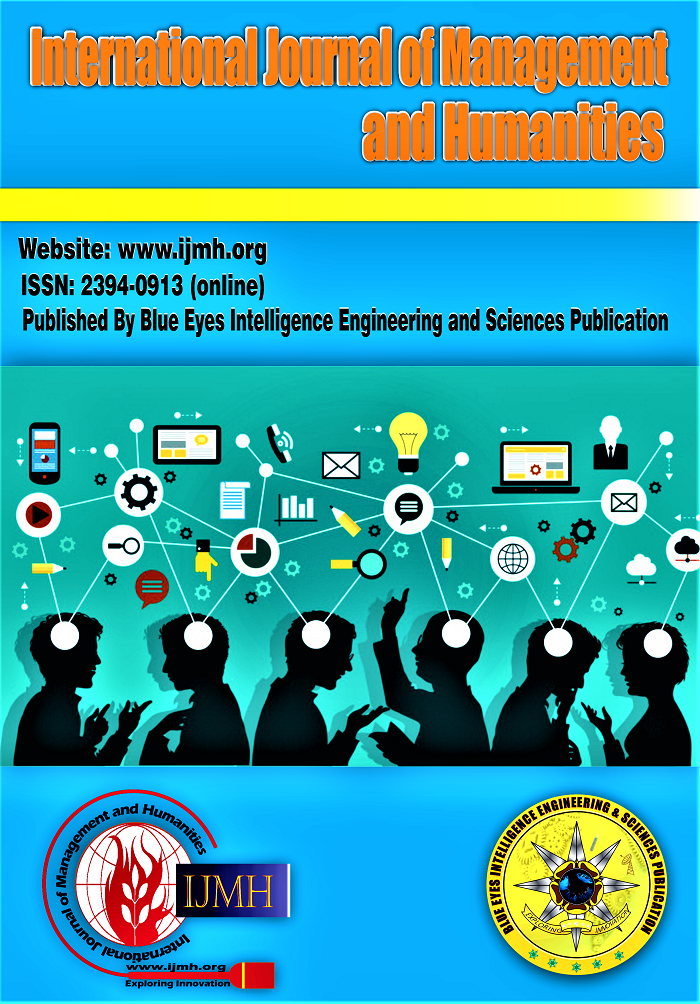Figurative Language of Song Lyrics in Akimoto Yasushi’s Works Sung by Keyakizaka46
Main Article Content
Abstract
The language used in song lyrics generally has an aesthetic, poetic style of language that contains meaning to entertain the audience. Song lyrics are a place for an author to express feelings about his experiences or the other people's lives. In a song lyric, the words are selected and adjusted so that the meaning and message of the song lyrics reaches the audience directly or indirectly. Indirectly conveying song content usually uses figurative language or figurative words such as conceptual metaphors. This study aims to describe the meaning and types of conceptual metaphors found in 3 song lyrics by Akimoto Yasushi performed by the idol group Keyakizaka46. Most of the songs created by Akimoto performed by Keyakizaka46 have the theme of differences and disputes, they performed the song without showing a smile, this is one of the uniqueness of Keyakizaka46. The method used is descriptive qualitative method. The theory used is Lakoff & Johnson's conceptual metaphor theory. The results of the study found 13 metaphors, consisting of 6 types of structural metaphors, 1 type of orientational metaphor, and 6 types of ontological metaphors. The metaphors in these 3 song lyrics by Akimoto Yasushi have meaning, namely an invitation for poets to dare to speak out and have an opinion in choosing, not to be afraid of disputes and differences, and to invite them to live life according to their own will and not be controlled by others. The use of metaphors in Akimoto's song lyrics shows the uniqueness and characteristics of the Keyakizaka46 idol group.
Downloads
Article Details
Section
How to Cite
References
Altun, M. (2017). The effects of teacher commitment on student achievement: A case study in Iraq. http://dx.doi.org/10.6007/IJARBSS/v7-i11/3475 https://doi.org/10.6007/IJARBSS/v7-i11/3475
Al Imron, A.M & Farida Nugrahani. (2017). Pengkajian Sastra: Teori dan Aplikasi. Surakarta: CV Djiwa Amarta Press.
Al Imron, A.M. 2009. Stilistika: Teori, Metode, dan Aplikasi Pengkajian Estetika Bahasa. Surakarta: Cakra Books Solo.
Alouw, Y. E., Oroh, E. Z., & Olii, S. T. (2021). Moral values in Lady Gaga’s selected songs lyric. SoCul: International Journal of Research in Social Cultural Issues, 1(01), 49-58. https://doi.org/10.53682/soculijrccsscli.v1i01.1699
Fahnestock, J. (2005). Rhetorical stylistics. Language and Literature, 14(3), 215-230. https://doi.org/10.1177/0963947005054478
Fairuz, Rahman, F., & Amin, M. A. (2022). Authors’ Figurative Expressions From Two Novels: A Comparative Analysis Between RTJNA Rosso and RTJNA Blu. Theory and Practice in Language Studies, 12(1), 150-157. https://doi.org/10.17507/tpls.1201.18
Fairuz, & Firza, F. (2021). METAPHOR ON JAPANESE SONG LYRIC BY MIWA: A STYLISTIC STUDY. Journal Of Cultura and lingua, 2(1), 26-32. https://doi.org/10.37301/culingua.v2i1.21
Fairuz, Rahman, F. Nurhayati, & Armin, M. A. (2019). A Study Of Figurative Language: Metaphorical Expression In Ekuni’s Japanese Novel. Jakarta: EAI CCER Hasanuddin Universaty. https://scholar.google.com (Jurnal diakses pada 18 Desember 2020).
Hawkes, N. (1978). The Language Education of Minority Children: Selected Readings.
Lakoff, G. dan Johnson, M. (1980). Metaphors We Live By. Chicago: University of Chicago Press.
Prihatini, A. (2015). Master Bahasa Indonesia. Yogyakarta: Penerbit B first.
Rahman, F., & Weda, S. (2019). Linguistic deviation and the rhetoric figures in Shakespeare’s selected plays. XLinguage" European Scientific Language Journal", 12(1), 37-52. https://doi.org/10.18355/XL.2019.12.01.03
Ratna, N. K. (2009). Stilistika: Kajian puitika bahasa, sastra dan budaya [Stylistics: The study of poems, literature and culture]. Yogyakarta, Indonesia: Pustaka Pelajar.
Kokugojiten https://dictionary.ne.jp
Profil Akimoto Yasushi https://www.wikiwand.com/id/Yasushi_Akimoto ( diakses pada 21 Mei 2020 )
3 lirik lagu Keyakizaka46 dalam bahasa Jepang https://www.oricon.co.jp/prof/670123/lyrics/latest/ ( lirik lagu. diakses pada 23 Mei 2020 )
Terjemahan lirik lagu dalam bahasa Indonesia. https://www.kazelyrics.com/ search?q=keyakizaka46 (lirik lagu. diakses pada 23 Mei 2020)
Profil Keyakizaka46 (2021).https://www.keyakizaka46.com/s/k46o/ artist/00/ discography?ima 0000 ( diakses pada 15 Maret 2021 )
https://realsound.jp/2020/01/post-477426.html ( diakses pada 15 Maret 2021 )
(www.taishu.jp diakses 15 maret 2021)
Lexical Stylistic Devices and Literary Terms of Figurative Language. (2019). In International Journal of Recent Technology and Engineering (Vol. 8, Issue 3S, pp. 231–233). https://doi.org/10.35940/ijrte.c1054.1083s19
Azatovna, A. M., Hayitmuratovna, E. N., Akbar qizi, B. B., & Norboyevich, U. B. (2020). Stylistic Characteristics of the Gender Based Folkloric Discourse. In International Journal of Innovative Technology and Exploring Engineering (Vol. 10, Issue 1, pp. 163–166). https://doi.org/10.35940/ijitee.a8142.1110120
D, R., & P, C. S. (2019). Author Profiling u sing Stylistic a nd N Gram Features. In International Journal of Engineering and Advanced Technology (Vol. 9, Issue 1, pp. 3044–3049). https://doi.org/10.35940/ijeat.a1621.109119
Sirojiddinov, S., & Normurodova, N. (2019). Pragmatics a nd Cognition: Intention a nd Conceptualization i n Discourse. In International Journal of Engineering and Advanced Technology (Vol. 9, Issue 1, pp. 2888–2893). https://doi.org/10.35940/ijeat.a1177.109119
Development of Speech Culture of Non-Philologist Students in the Course of Examining the Category of Gender in Russian Language. (2019). In International Journal of Innovative Technology and Exploring Engineering (Vol. 9, Issue 1, pp. 5151–5154). https://doi.org/10.35940/ijitee.a9218.119119





